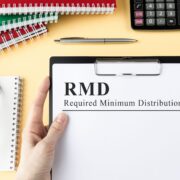Investors frequently have to pick between dividends and development. For instance, numerous stocks with the greatest dividend yields create little-to-no-growth, which restricts the capacity for outsized shareholder returns. On the other hand, lots of growth stocks have extremely low dividend yields or do not pay a dividend at all.
However, in uncommon cases, investors can find stocks that use a mix of both qualities. United Parcel Service (UPS) is a good example of this, as the stock has a solid 2.5% yield and increases the dividend regularly. UPS is also poised for strong growth in 2020 and beyond, thanks to the e-commerce boom.
UPS is a favored holding for many income financiers and even major institutional financiers such as the Expense & & Melinda Gates Foundation. The stock stays attractive for income investors searching for a mix of development too.
Blowout Earnings Outcomes
United Parcel Service was founded in 1907. Today, it is a logistics and bundle shipment business that offers services consisting of transportation, distribution, ground freight, ocean freight, insurance coverage, and funding. Its operations are split into three sections: United States Domestic Bundle, International Bundle, and Supply Chain & & Freight. UPS trades with a market capitalization of above $140 billion.
While numerous financial sectors are struggling due to the coronavirus pandemic, UPS is firing on all cylinders. It is really gaining from the coronavirus, as lockdowns have triggered consumers to take their purchasing online. The e-commerce boom was already happening heading into 2020, and the beginning of the coronavirus has just accelerated this trend.

In the 2020 third quarter, revenue increased 16% to over $21 billion. Average daily volume development of 13.5% sustained UPS’ development last quarter, as did rate increases. Adjusted earnings-per-share increased by 10% year-over-year. This was truly a blowout quarter for UPS, as it easily surpassed analyst price quotes for profits and EPS.
We expect continued growth for UPS in 2020 and beyond, as the business is taking advantage of long-lasting tailwinds that are likely to last for many years. One such tailwind is e-commerce, which has caused development in the number of packages that are transferred across the nation. With online shopping growth continuing to outpace brick-and-mortar development for the foreseeable future, UPS should continue to benefit from a strong need for its services.
Shipping Dividends to Investors
UPS investors have taken advantage of the company’s outstanding growth over the last few years, both in regards to an increasing share price, in addition to dividends and routine dividend growth. UPS is just an atm– through the first 3 quarters of the year, UPS created operating cash circulation of $9.3 billion and adjusted totally free capital of $5.9 billion.
Such a strong cash generation allows the company to return cash to investors, through a combination of buybacks and dividends. The stock currently yields 2.5%. While UPS is not a high-yield stock, it does still beat the typical S&P 500 yield, which is below 2% right now. And, UPS is a strong dividend development stock.
According to the business, UPS has either kept or increased its dividend for almost 50 years. It has also managed a high dividend growth rate. Considering that 2000, UPS’s dividend has more than quadrupled. The company raised its dividend by 5% in 2020, a healthy raise that beats inflation.
Final Thoughts
When it comes to dividend stocks, investors frequently have to choose between yield and growth. But UPS is a distinct mix of an above-average yield combined with outstanding development capacity. UPS is profiting from the explosive development of e-commerce. It must continue to create growth in the years ahead, thanks to its competitive benefits and leadership in the logistics industry. With a 2.5% yield and regular dividend increases each year, UPS stock is an appealing buy for dividend development.
























Comments